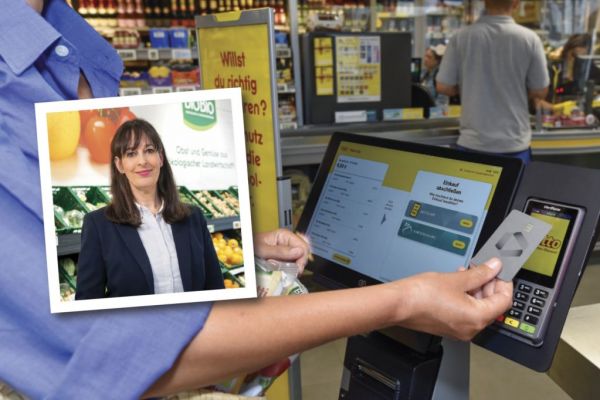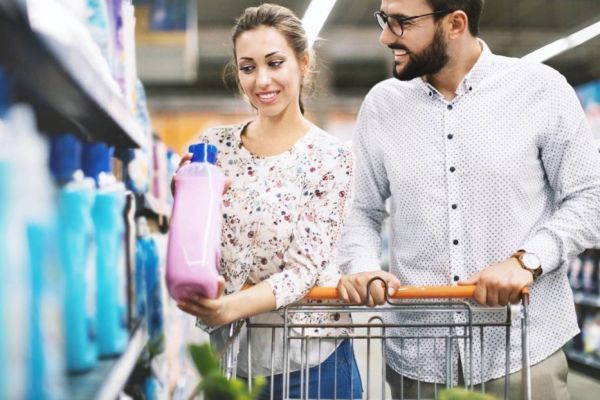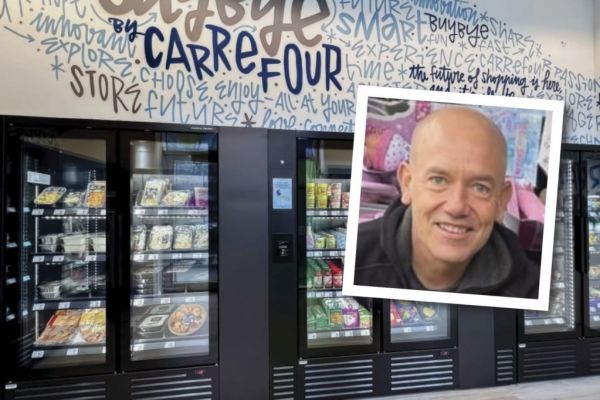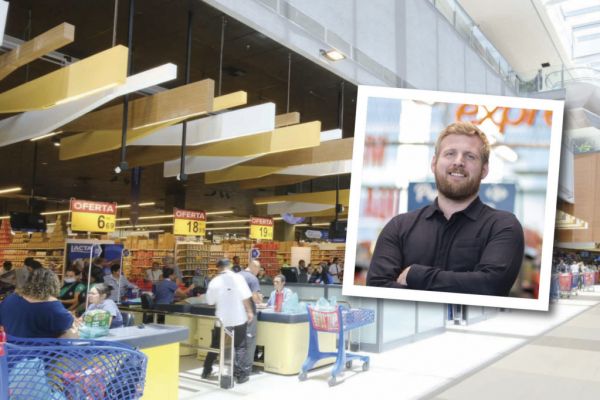In the run up to Christmas 2018, ESM is proud to present a recap of some of our biggest articles of the year, exclusively for Premium website subscribers. In Issue 1, ESM met with author Wijnand Jongen to discuss how technology is redefining retail. This article first appeared in ESM Issue 1 2018.
Retail may be one of the oldest professions on the planet, but even the longest-standing structures occasionally have to put up with a few earthquakes.
The growth of online players such as Amazon, Alibaba and countless others, combined with the emergence of a generation of consumers for whom a smartphone is simply an extension of their self, means that embracing the digital age is no longer simply a ‘nice to have’ for traditional retail.
Soon consumers just won’t accept anything less, or, as chairman of the executive committee of E-commerce Europe, Wijnand Jongen, says in his new book, The End of Online Shopping: The Future of Retail in an Always Connected World, we are now entering the world of ‘onlife retail’, where online and offline become one.
Gone are the traditional silos that define a retailer as a digital or ‘bricks-and-mortar’ player, instead, the blurring of the lines has become so exigent that both states need to co-exist at the same time.
What The Shopper Wants
As the title of the book suggests, we will soon see The End of Online Shopping in a conventional, binary sense. In other words, retailers of the future will have to be online, offline, on social media, and everywhere else the customer is.
“In the history of retail, the intensity of this change has never happened before,” Jongen says. “How can we keep up with all this new technology, how can we understand all the new technology that is in our hands. I dare to say that for the first time in history, retailers cannot keep up with the level of change that is taking place at consumer level. And it's not the technology that's driving consumer behaviour, it's the consumers themselves.”

New Retail
This ‘onlife’ environment has also been touted by Jack Ma, the founder of Alibaba – in a letter to Alibaba shareholders in October 2016, he referred to it as ‘new retail’. In a quote that appears early in Jongen’s book, Ma said that “Pure e-commerce will be reduced to a traditional business and replaced by the concept of New Retail – the integration of online, offline, logistics and data across a single value chain.”
A year and a half on, are traditional retailers listening? The answer is both yes and no, as Jongen explains.“For retailers, it’s about going back to basics: understanding the customer,” he says. “A lot of retailers think they are very consumer centric and focused, but they are not; the consumer is really the driving force at the moment, and technology is making that possible. The consumer is always three or four steps ahead.”
Jongen does not feel, however, that grocery retailers should be held accountable for being somewhat slower than those in other sectors to embrace online - after all, the cost structure on which such retailers are built is in many ways obverse to how online business operates.
“Grocery retailers should not apologise for that - the business model of online grocery is a lot harder than physical retail,” he says. “How do you get all those items, frozen or not, to your doorstep in an efficient, cost-effective way?”
What he does feel however, is that many retailers are turning a blind eye to the rise of startups like Picnic in the Netherlands, an online-only player that raised €100 million in investment funding early last year, when they should be implementing new structures that enable them to compete better in an ‘onlife’ setting.
“All retailers should have the opportunity to create new services within their stores that will attract customers,” he says. “From a social perspective, it’s about imagining grocery shopping as an experience. The winners of the future are going to be those that can combine that traditional experience with online.”
Learning From The Past
Jongen, who is also CEO of the Dutch e-commerce association Thuiswinkel.org, has a longstanding relationship with online retail - in fact, back in 1997, he was part of the team that launched Macropolis, a ‘computerised shopping city’, in which virtual avatars could visit one store or another and purchase products.
Two years later, Macropolis went online, with some 5,000 web stores taking part. Within a couple of years, however, the internet bubble had burst, and Macropolis was no more.
“Ultimately we didn't have our business model right,” Jongen says of his former venture. “We couldn’t work out how we were going to make money from it.”
But a lot of the things that featured in this early e-commerce platform still ring true in today’s highly advanced ‘onlife’ environment. For exameple, it boasted a virtual shopping assistant called Sanne, which could answer simple questions about products, and also offer shopping advice. Two decades later, the Sanne of the pre-broadband age has evolved into the Alexa (Amazon’s voice ordering assistant) of the onlife world. And as Jongen explains, once consumers embrace voice, they’re not going to go back.
“Voice is simpler than typing in something, it saves you time,” he says. “Retailers, traditional or otherwise, need to understand that consumers are soon going to behave in this way. We're going to adopt voice, we're going to adopt more visualisation, dynamic apps into our lives. It will make our lives easier.”

Different Thinking
In this changed, onlife environment, everything remains open to change, and therefore there is no set structure retailers should use to guarantee success in the future - even Amazon understands this, with the jury still out as to whether its Amazon Go concept in Seattle is a blueprint for a nationwide store launch, or just a very elaborate one-off?
As Jongen explains in the book, Amazon (as well as Google, Apple, Samsung etc) keeps trying out these new concepts as they understand the ‘need to nurture their personal relationships with their clientele. Tech giants are among the first to grasp this profound retail truth: the core values of the 1950s still apply to the next generation of onlife consumers.’
Thus for traditional retailers, all is not lost, as Jongen explains. The values of their consumers largely remain the same - customers need to feel like they are important - but the medium by which this is delivered is changing rapidly. “I think we are at the beginning of a transformation, and there's no doubt that there will be some retailers that will not survive,” he explains.
“But for those retailers that are really able to set a strategy and adapt to a new generation of consumers - there are lots of opportunities. Physical retail will continue to exist, online retail will not take it over completely. I think the future will be a mix between physical and online, and whoever does that best will still be there in the decades to come.”
The End Of Online Shopping is available to order online at wijnandjongen.nl
© 2018 European Supermarket Magazine – your source for the latest retail news. Article by Stephen Wynne-Jones. Click subscribe to sign up to ESM: The European Supermarket Magazine.














